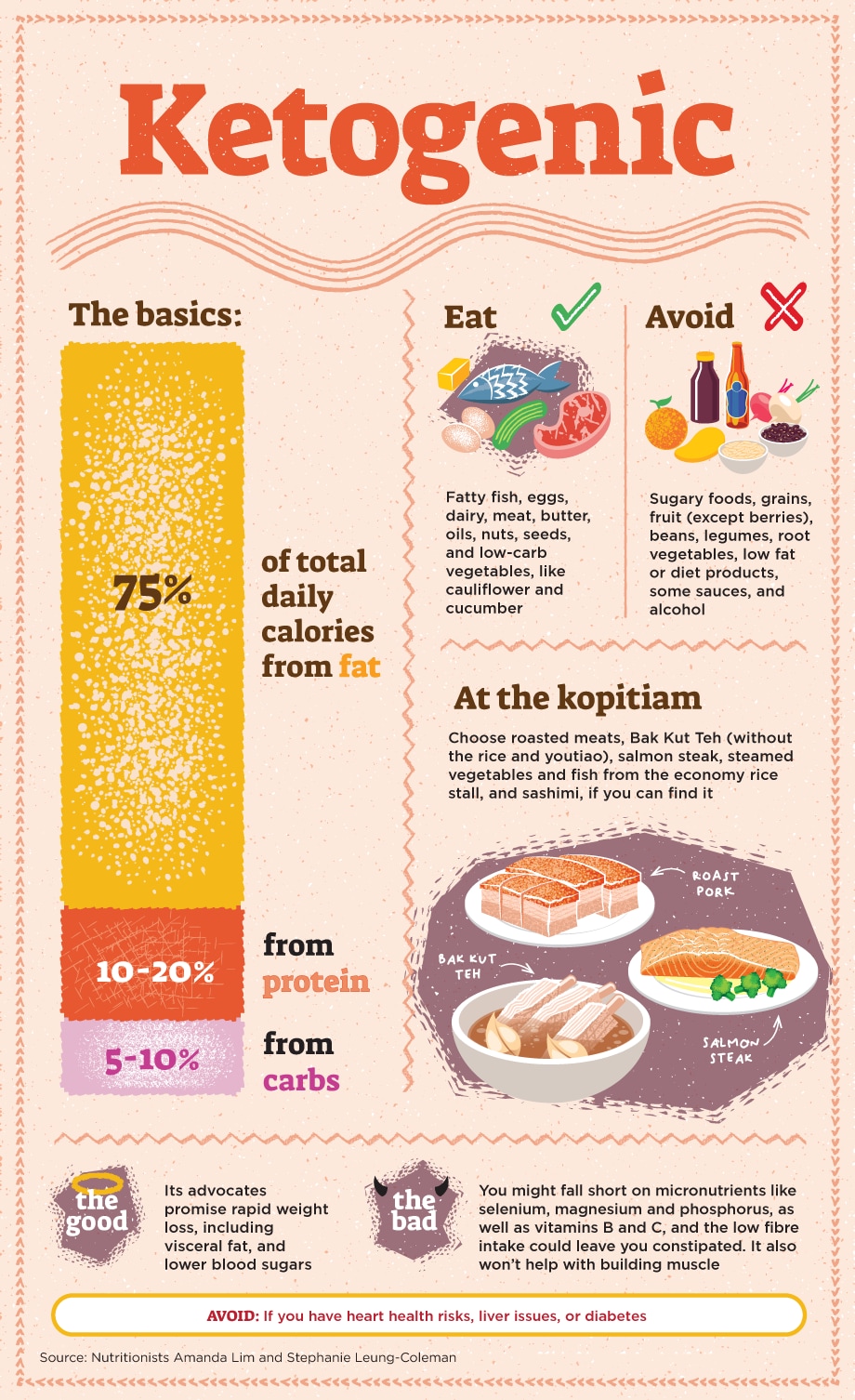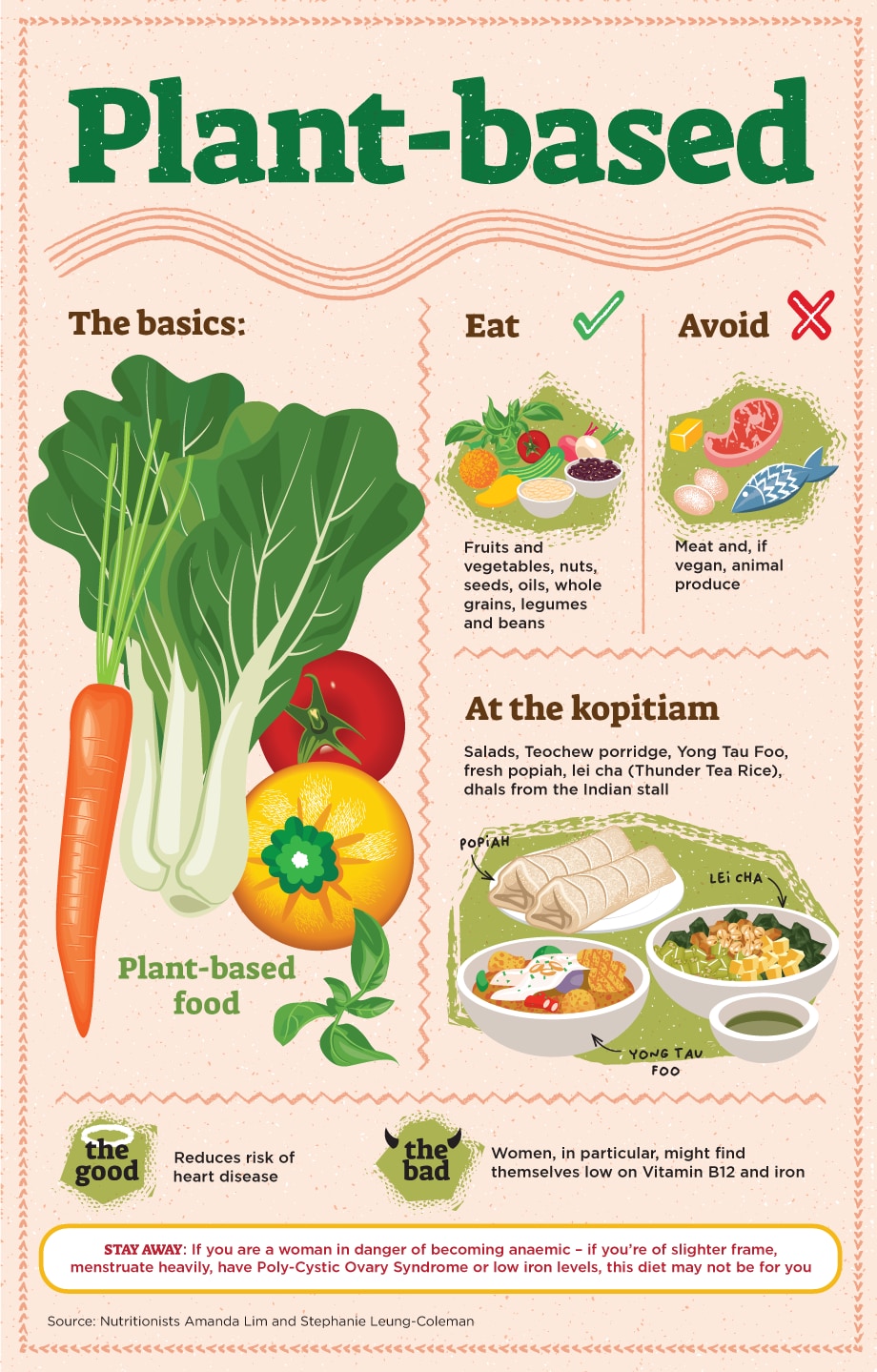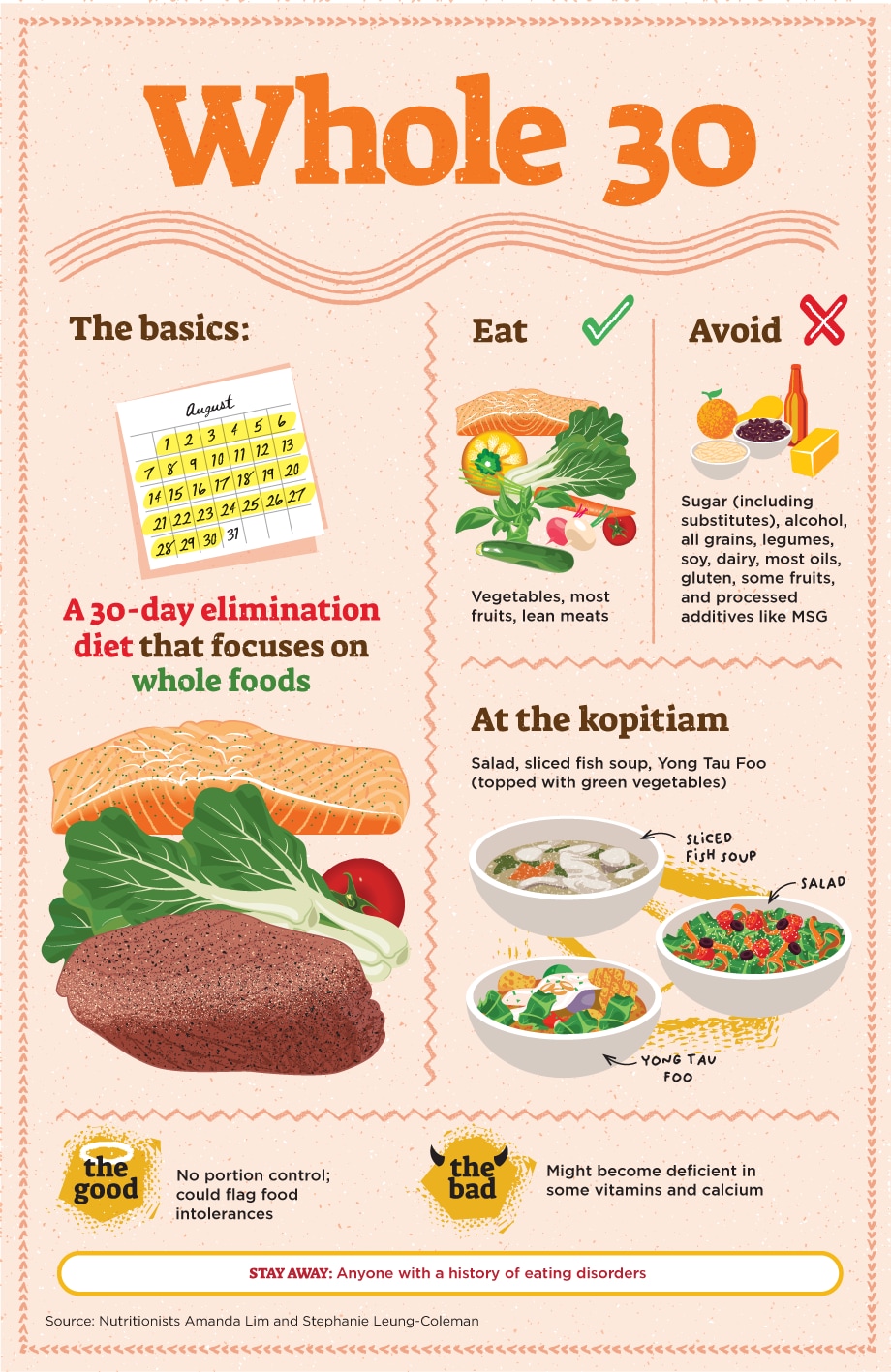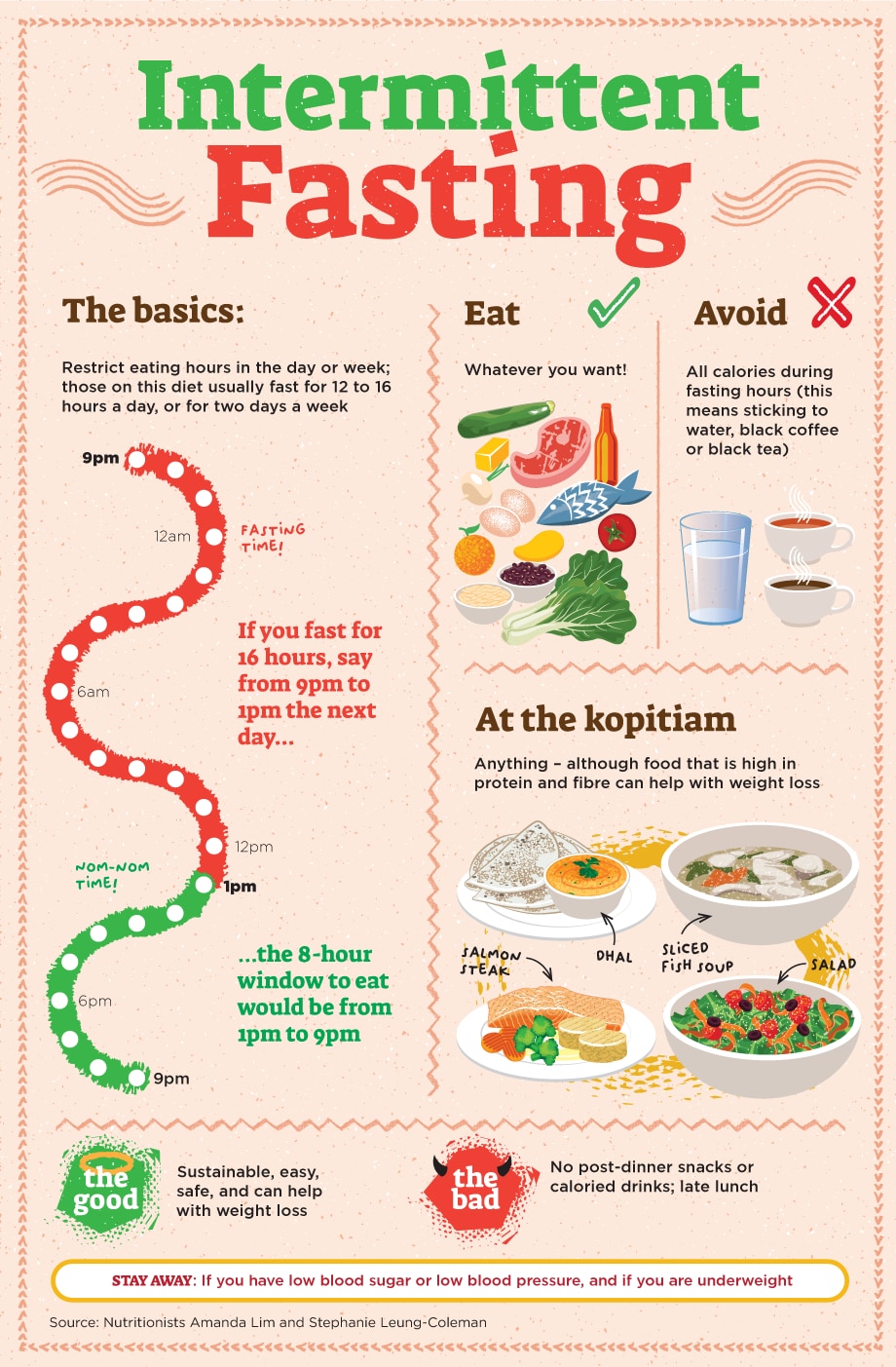Ask the Expert: Fad or Fab? The Skinny on Diet Trends
Ask the Expert: Fad or Fab? The Skinny on Diet Trends
A healthy diet not only gives you the body you want, but helps you feel better and live longer. Nutritionists weigh in on the good, bad, and ugly of trending diets. This article is part of Small Change, Big Impact, an ongoing series about embracing a better tomorrow by making small lifestyle changes today.
The appeal of a quick shred or shed is undeniable, and cutting calories or eating hours, even axing entire food groups promise to put dramatic transformation within reach.
But are fad diets really all that, and do the results stick? Are there downsides? And can you still have your weekly fix of chicken rice? Nutritionists Amanda Lim from Peak Health Consultancy and Stephanie Leung-Coleman from Eatlifewell Functional Nutrition Clinic, who have clocked a combined 20 years in the industry, weigh in.
Ketogenic

Keto is classed with other carb-restrictive diets like Atkins, South Beach, Paleo and Carnivore, but you dial up the fat significantly – to 75%. The goal is nutritional ketosis, when the body switches from burning carbs to burning fat. Cue: weight loss. Choose healthier sources of fat, such as olive oil, avocados and nuts, and you could avoid some of the cholesterol pitfalls.
The good: follow the diet to the letter – from investigating food elements to hitting the right target percentages – and you will lose weight pretty quickly. Another plus: fat makes you feel full, says Stephanie.
The bad: a high chance of weight rebound, and impractical if you eat out, socialise or travel, she adds. “Avoiding sauces and condiments can be harder when you’re not cooking.”
The ugly: Blood draws are the most accurate way to check if you are really in ketosis, although there are pee sticks that let you check your urine for ketones. You might also get hit with keto flu, which could include chills and nausea, Amanda warns. And pay attention: if your breath smells of vinegar, you might have ketoacidosis and need medical help.
Plant-based

Vegetarianism is associated with several religions, but going plant-based is also the rage with animal lovers, those concerned about sustainability, and some weight-watchers. Raw veganism – a combination of veganism and raw foodism – is one extreme, and plant-based could loosely also include pescetarianism.
The good: You’ll improve your heart health if you eat your way through a rainbow of fruit and vegetables, and get a protein punch from soy and legumes. For weight loss, choose the highest protein foods possible within the plant-based universe – egg white, tofu, edamame, and use quinoa as your base grain.
The bad: Plant-based fats like avocados and seeds can raise your total calorie count significantly – which is great if you’re looking to bulk up. You also won’t lose weight if you feed hunger pangs with refined carbs like rice, instant noodles and french fries, eat too many processed proteins, or end up a “junketarian”, Amanda warns.
The ugly: You could be losing more than weight – women might end up low on Vitamin B12 and iron, and should take supplements for this, says Amanda. Too much soy can also cause hormone disruptions, especially in women.
Whole 30

Whole 30 is a 30-day elimination diet that’s a variation on clean eating, Auto-Immune Protocol, and the Gut and Psychology Syndrome diet.
The good: You’re basically pressing the nutritional reset button. Your body gets a break from junk and processed food, and you can eat as much of the good stuff as you want. If you have undiagnosed gut problems, it could identify where the intolerance lies – you reintroduce the items you’ve cut out one at a time and can isolate the triggers, Amanda points out. And because you’ve ditched almost every calorie-dense food group, you’ll shed some kilos.
The bad: Ditching major food groups could lead to vitamin and calcium deficiencies, so it’s not advisable to stay on this diet indefinitely. It can also cause issues with digestion.
The ugly: It takes the fun out of something you spend a lot of your life doing, says Amanda. “This diet eliminates everything. It’s joyless, and the hardest and most unpleasant to do. It’s hard to achieve satiety, and because it’s not a sustainable approach to eating, the weight you displace often returns.”
Intermittent Fasting

Both nutritionists agree that Intermittent Fasting is possibly the easiest, most accessible and most culturally-friendly way of losing weight. The basic premise: insulin is released when you eat, and then goes about its job of moving fat into cells to be stored. When you fast, insulin levels go down, giving your body enough time to reverse the process and burn off some fat, although this theory hasn’t stood up to scientific scrutiny.
The good: It seems to work. In the 16:8 configuration, meals are only eaten during an eight-hour stretch during the day, and it’s hard to eat a calorie surplus in such a short time. There are also no food restrictions, and if you work late and skip breakfast anyway, not much change is needed, says Stephanie.
The bad: depending on your fasting hours, you’ll have to ditch post-dinner snacks (and drinks) and eat lunch late.
The ugly: While it’s not hard to follow, like any diet, there are “diminishing returns” – your body and metabolism get used to the new, lower calorie intake. Also, remember that there are no “free foods” during fasting hours: all you can have is water, black coffee or tea.
Balance and moderation is key
It all leads to the same bottom line: calories are calories, wherever they come from, and you need to be in a calorie deficit to lose weight. Diets can help kick bad eating habits to the kerb, but you need to convert some of these small changes into longer-term habits to create the biggest impact.
That means being realistic, says Amanda. “Giving up Asian staples like rice or noodles for thirty days is fine, but for years? It’s improbable. That’s why any nutritionist will say that the only diet that works is a diet that doesn’t feel like one – one based on balance and moderation.”
At Temasek, we’re committed to catalysing change towards a better, smarter, and more sustainable future.


